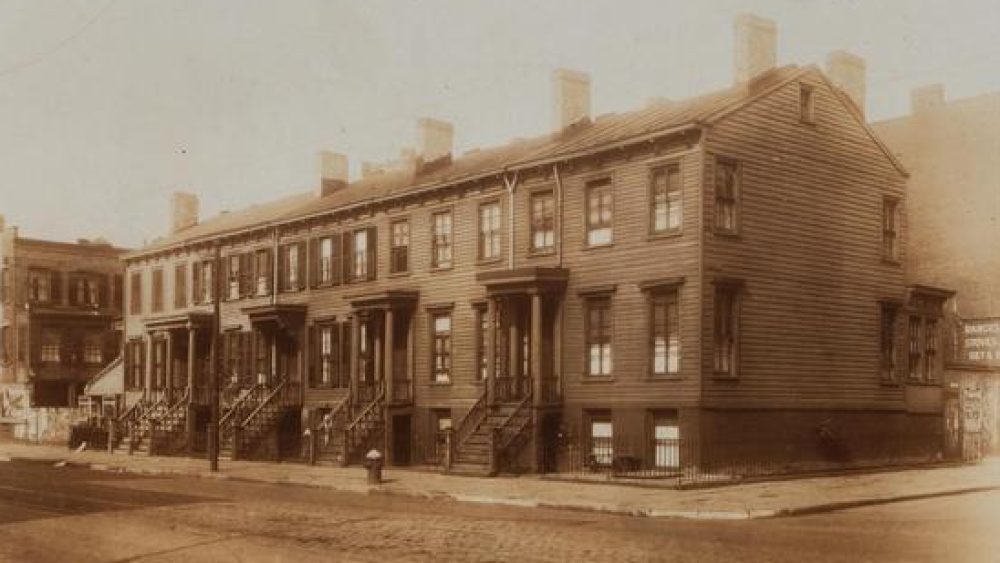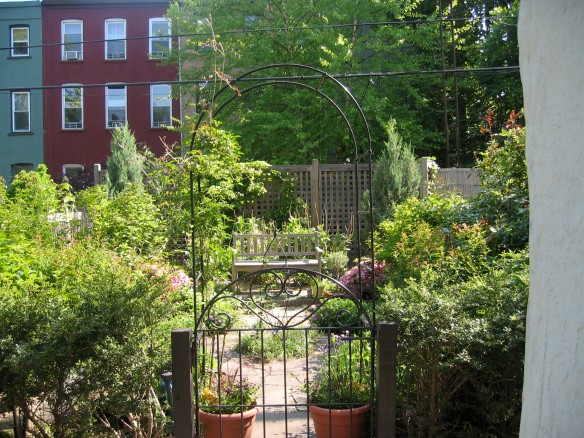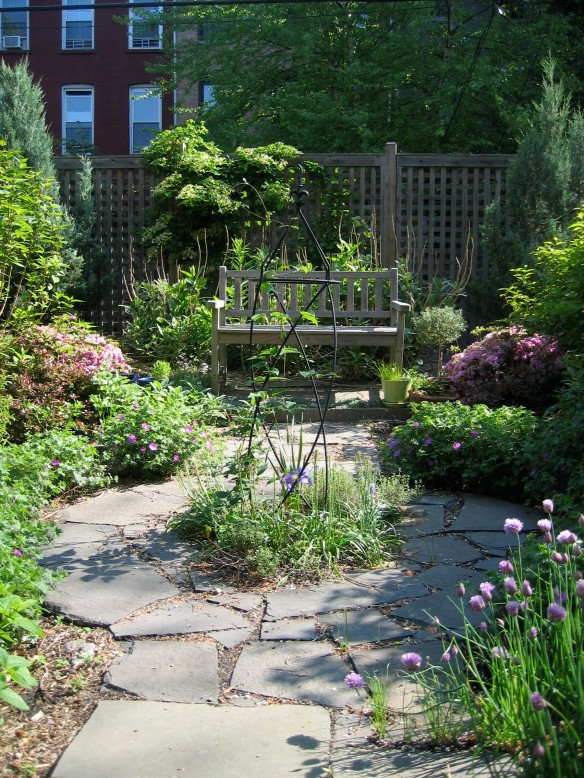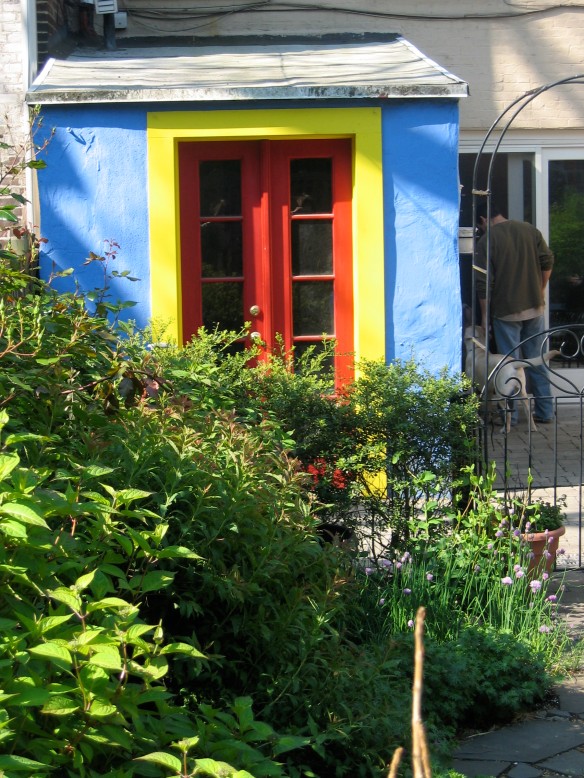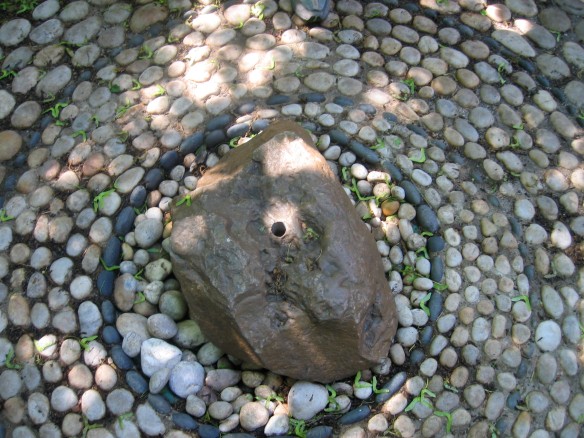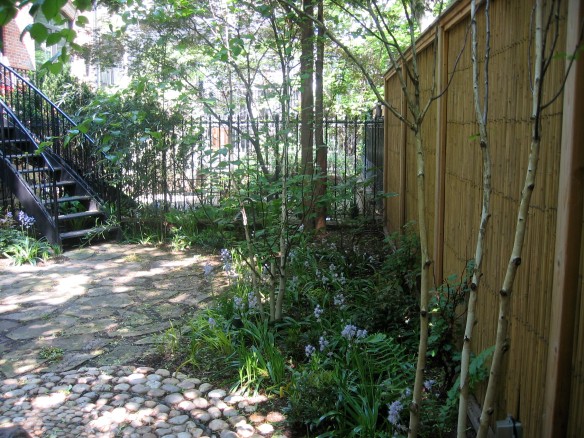ONCE A SEASON at LongHouse Reserve, the 16-acre ornamental and sculpture garden in East Hampton, N.Y., masterminded by textile designer/scholar/collector Jack Lenor Larsen, is not enough. (That’s Larsen’s Shinto temple-inspired house, above).
I visited LongHouse for the first time last May, when azaleas and roses were among the main attractions. I returned a couple of weeks ago, and found it less riotously colorful, perhaps, but still awe-inspiring. Late summer/early fall is the time to appreciate late-blooming hydrangeas, ornamental grasses in their prime, elephant ears and annual vines at maximum size and spread.
Below, how the dry Mediterranean garden looks in late August. I love that LongHouse “allows” some of the lambs-ear-like plants I’ve been thinking of as weeds in these beds; it’s making me reconsider pulling them out where they’ve colonized a sunny section of my lawn.
Here’s one of the monumental sculptures I neglected to photograph back in May. “Summer Bridge,” below, a 1983 work by Claus Bury, was created when the German artist was just 19 years old.
Another of the many takeaways from LongHouse: lots of ideas for paving and paths, including slate pieces set in gravel, below, done so beautifully here.
You have until October 9, when LongHouse closes for the season, to visit and be wowed. Hours are short: Wednesdays and Sundays only from 2-5PM. Admission is $10. So well worth it.
